Nowadays, companies want to dispatch products to consumers on scheduled dates and times. And users expect the delivery to quickly reach their doorstep. So, digitization of delivery and fleet management is beneficial for both sides in 2024.
Any delay in the process means frustration for users and loss of revenue for businesses. We are living in a world where the only constant is the change. Consequently, businesses want products and services that are built towards customer-centricity.
Today, the competition is so cutthroat in all industries worldwide and in the United States. So, you as a business owner are aware of losing customers to another business. That’s where expert dedicated developers come to your rescue as digitizing distribution solutions is the answer.
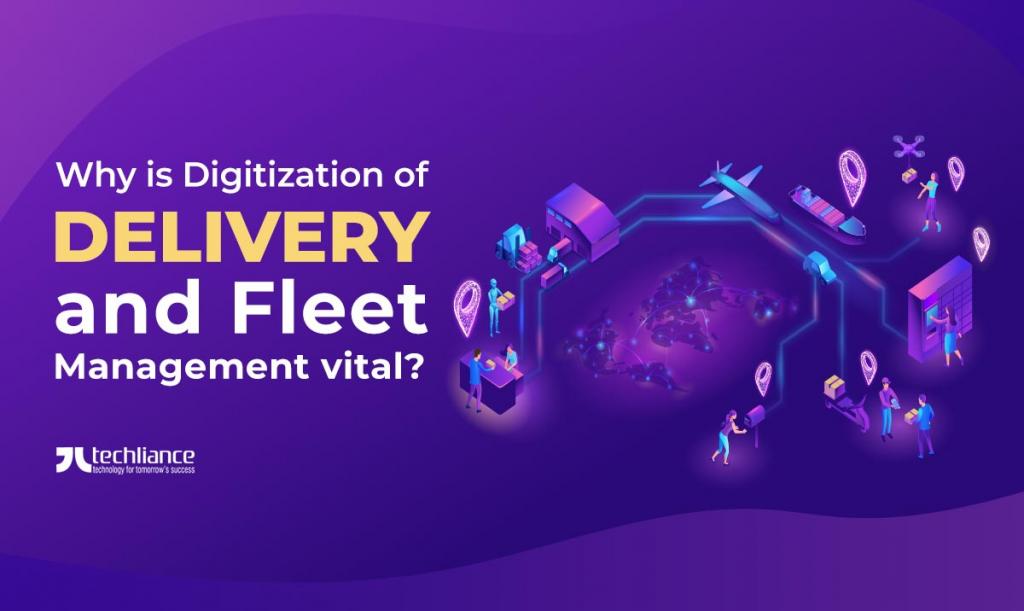
What is Telematics?
Telematics is the coming together of telecommunication, electrical engineering, vehicular technologies, and computer science. It provides the bridge between fleet, resources, and the users. So, many supply chain businesses are embracing telematics to transform their delivery and logistics processes.
Quick response time and instant dispatch management are some of the key pain points for businesses. Presently, more and more logistic companies are heading on to smarter solutions. Because the answer lies in the incorporation of smart technology in their fleet management processes.
Realize that telematics is the future of tomorrow that is leading the way for today. Logistic apps allow users to book a vehicle or delivery slot on which their goods must be delivered to them. Also, you can use modern-day technologies such as AI and cloud-based services within telematics.
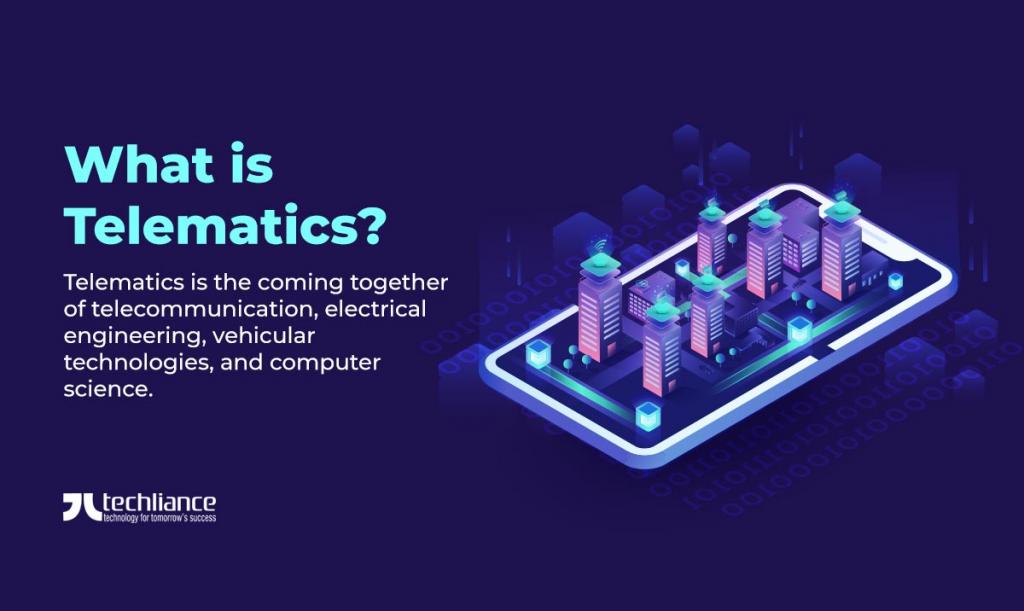
Statistics on Digitization of Delivery and Fleet Management
Here are some stats on digitization of delivery and fleet management using telematics that prove its importance.
- Research forecasts the universal vehicular telematics market to be valued USD 103 billion by 2024.
- The international fleet management market will increase to $33.9 billion by 2026 from $20.6 billion in 2021 (10.5% CAGR).
- Another study predicts global fleet management size to hit USD 30 billion till 2022.
- Globally smart fleet management market will rise to $82 billion in 2026 from $44.5 billion in 2021 (13% CAGR).
- The fleet management software market worldwide will grow from $19.58 billion in 2021 to $59.08 billion in 2028 (17.1% CAGR).
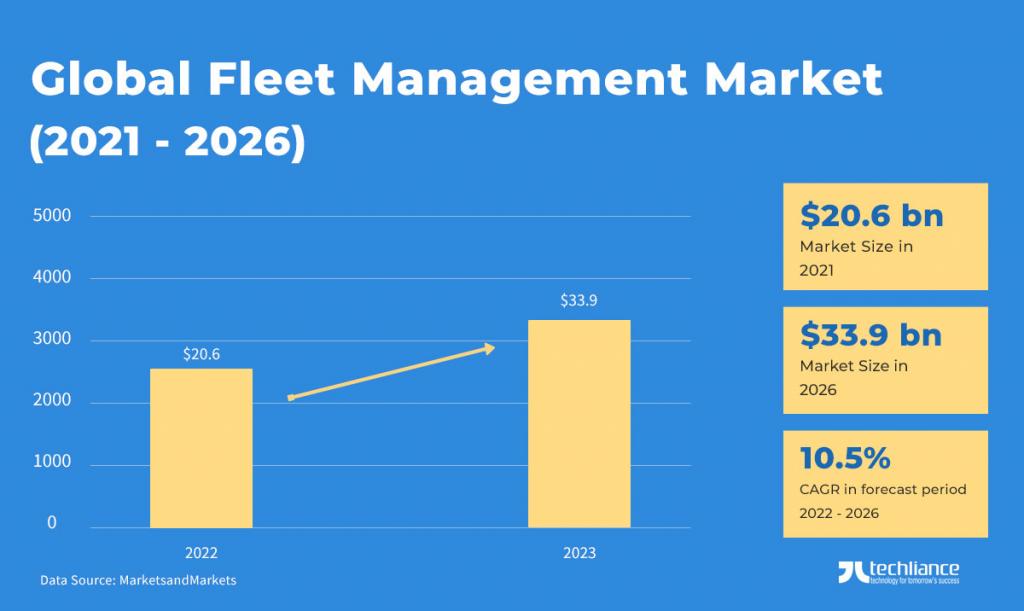
| Mode | 2015 | 2045 | Percentage Increase |
| Truck | 11,513 | 16,529 | 44% |
| Pipeline | 3,303 | 4,554 | 38% |
| Rail | 1,694 | 2,094 | 24% |
| Water | 835 | 1,156 | 38% |
| Multiple Modes and Mail | 398 | 646 | 62% |
| No Domestic Mode | 273 | 297 | 9% |
| Air | 7 | 24 | 234% |
| Total | 18,056 | 25,331 | 44% |
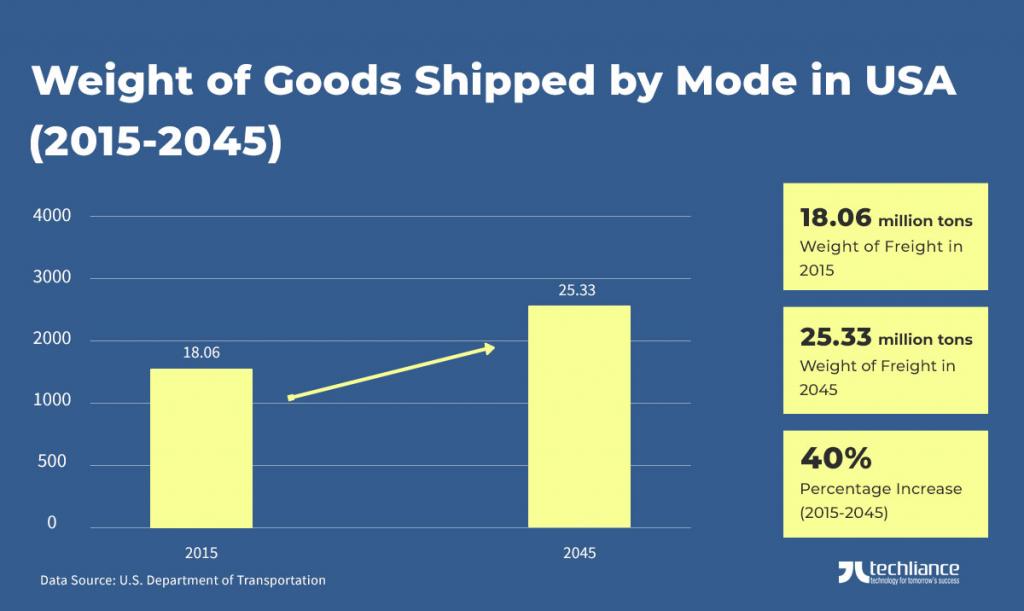
| Mode | 2015 | 2045 | Percentage Increase |
| Truck | 13,267 | 24,406 | 84% |
| Multiple Modes and Mail | 2,129 | 4,336 | 104% |
| Pipeline | 1,445 | 1,797 | 24% |
| Air | 794 | 3,240 | 308% |
| Water | 694 | 1,517 | 118% |
| Rail | 657 | 1,198 | 82% |
| No Domestic Mode | 179 | 195 | 9% |
| Total | 19,249 | 37,014 | 92% |
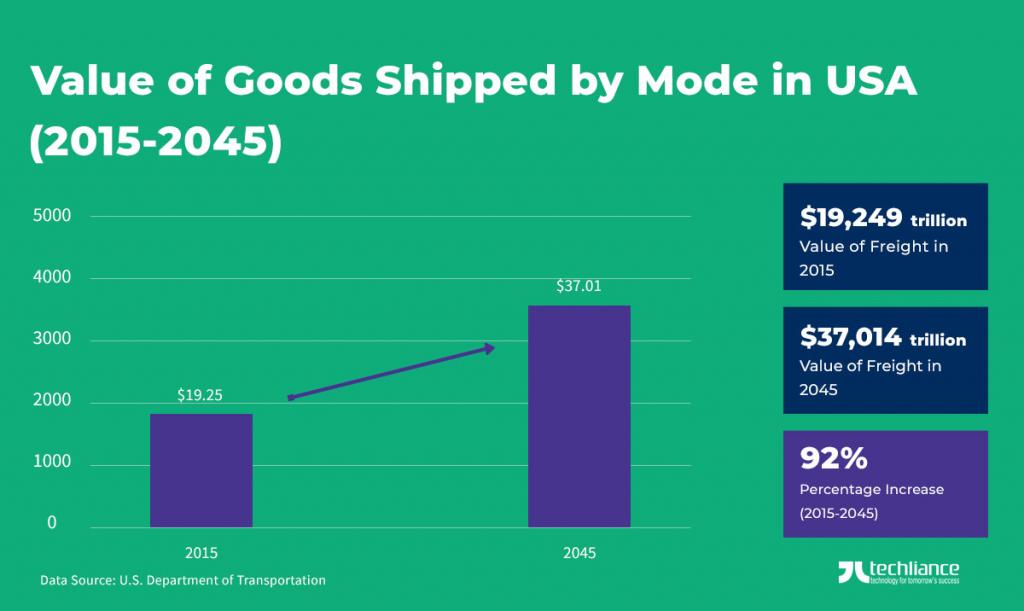
How is Digitization moving Delivery and Fleet Management?
This helps in finding the most optimized route, the right vehicle, and diagnostics. So, you get the optimum delivery in terms of cost, route, and resources. And the plus point is that it’s all in real-time.
It enables users and companies to stay abreast of the changes that take place. For example, traffic, weather conditions, asset utilization information, fuel utilization, and preventive maintenance. Also, you get familiar with other elements that are part of the picture.
The powerful distribution apps even help in overseeing driver safety measures and a holistic view of driver behaviors. Presently, this is all about helping companies give better services to users. It’s a win-win for both users and businesses/startups in the logistics industry.
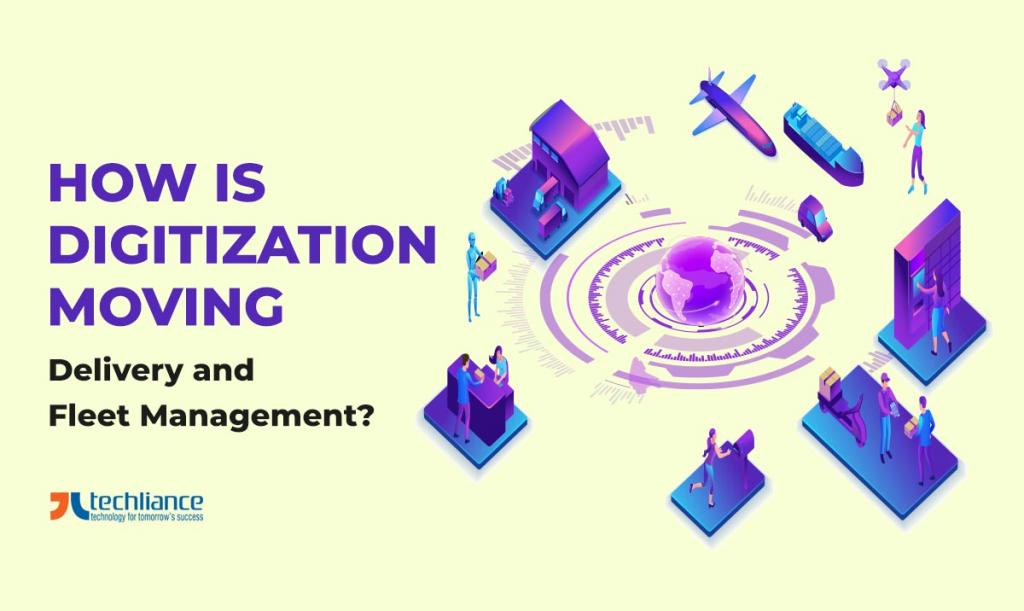
Benefits of Digitization of Delivery and Fleet Management
Given below are the advantages of digitization of delivery and fleet management for logistics businesses during 2024.
- Orchestrate the show with IoT devices
- Keep a closer eye on your fleet
- Automate goods delivery workflows
- Work for a carbon-free world
Next, we discuss the rewards that digitization of delivery and fleet management brings for supply chain businesses.
Orchestrate the show with IoT devices
Speaking of 2024, transportation management has become a precise science. This has evolved from second-guessing delivery arrival times. Subsequently, it has become more accurate with help of predictive analytics and behavioral trends.
Empirical data helps in providing detailed insights for providing spot-on information. Most of all, the machines – be it vehicles, sensors, and smart devices – communicate through the power of IoT. Accordingly, the delivery/distribution vehicles of today are also intelligent.
Now, trucks can load the exact amount of goods as per capacity on basis of communicating with smart sensors/robotics. Making informed decisions based on proper data leads to better manageability of schedules, orders, and tracking of goods. Also, it allows companies to provide real-time updates that are 80% more accurate.
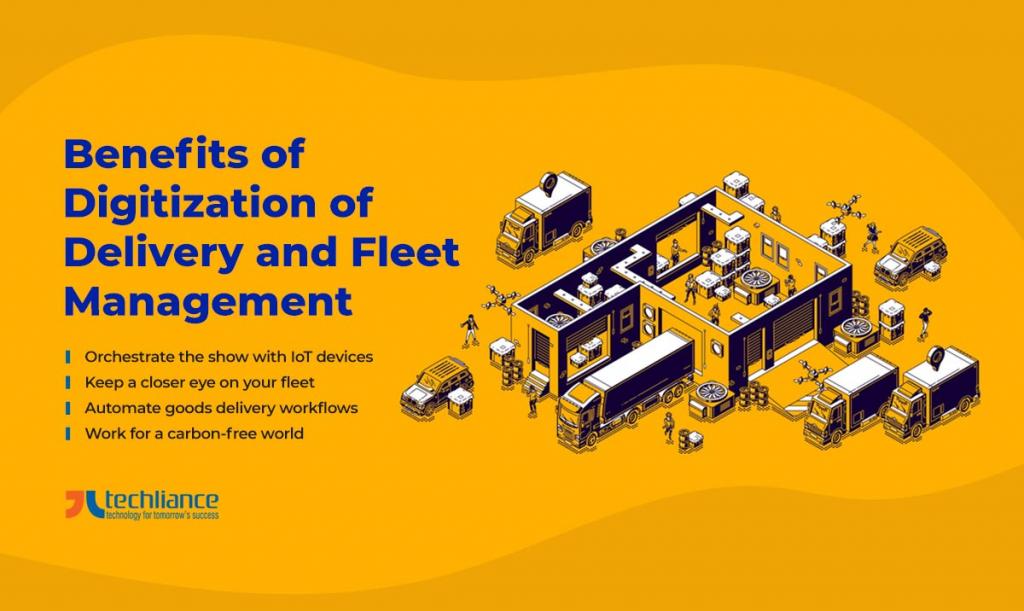
Keep a closer eye on your fleet
The digitization of delivery and fleet management industry is a great example of smartly utilizing a fleet. Also, that too within the specified budget and time. It covers a lot of areas including the following.
- Asset management
- Performance management
- Sales management
Automate goods delivery workflows
One of the biggest factors for having distribution management software is to allow the connection of various stakeholders. Because a complete automated business workflow provides greater supervision and control of routine tasks. Just like other industries, automation is transforming the supply chain and distribution networks.
Imagine being an administrator of the distribution app for a logistics and goods delivery business. You will have complete visibility of the landing orders, their status, and the next steps. Thus, the chances of manually allocating tasks correctly and ensuring operations continue smoothly can be cumbersome.
However, when you have automation – the next step is carefully analyzed through intricate algorithms. It ensures the driver and vehicle assignment takes place as per the given set of data and resources. So, there should never be an instance where a driver and vehicle are overloaded or under-allocated.
At times, manual allocation can even lead to multiple trucks landing in the same area for delivering goods. But this will waste a lot of capacity. After all, it is about finding optimized solutions for the company without wasting its resources.
Work for a carbon-free world
Technology is leading the way for not just cost-effective solutions for companies but also providing ways for a greener Earth. The US transportation system averagely moves about 49 tons of freight valuing more than $53 billion daily till 2019. More than 72% of this freight by weight, and more than 80% by revenue valuing $791.7 billion moves by trucks.
However, advanced truck lifecycle analytics available in transportation management software can help lower fuel costs. This can be done by monitoring various metrics of fuel economy. Therefore, minimizing fuel expenses assists in increasing the revenue and profits of logistics and carriage companies.
Around 14,00 companies in the US have pledged to regularly inspect their fleet. They plan to make sure that the repairs and maintenance are at par level. Also, this ensures that the utilized resources aren’t harming the environment, instead, they’re providing highly optimized services to their end-users.
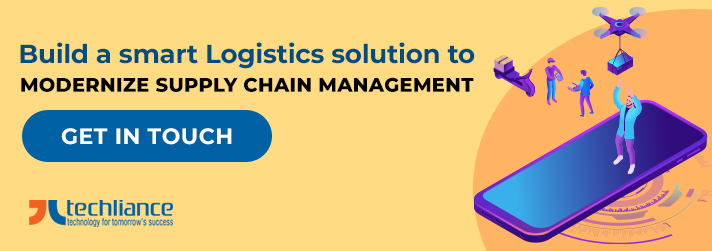
Conclusion
Currently, digitization of delivery and fleet management systems are crucial for providing better capabilities, and decision-making to businesses globally. However, just 23% of fleet companies are fully utilizing big data capacity for making well-informed decisions. This means there is still a huge potential for growth in the logistics and supply chain market.
Relevant software can help companies bridge the gap between their existing operations and the possible ROI through technology investments. That’s why it is important to seize the opportunity of developing smart logistics apps right now. So, it enables you to grow your distribution business through inventive technology concepts.
In today’s advanced and modern world, it’s all about understanding the need for solutions that mesh well with the users. Provide cost-effective and environment-friendly solutions to common goods delivery problems. Hence, you can step up the game for a better market share in your target area.
Do you want to make a smart logistics and supply chain management solution? We at Techliance are a services provider company to many delivery management companies in the US and across the globe. Let’s get started on a discussion for your distribution management software today.




